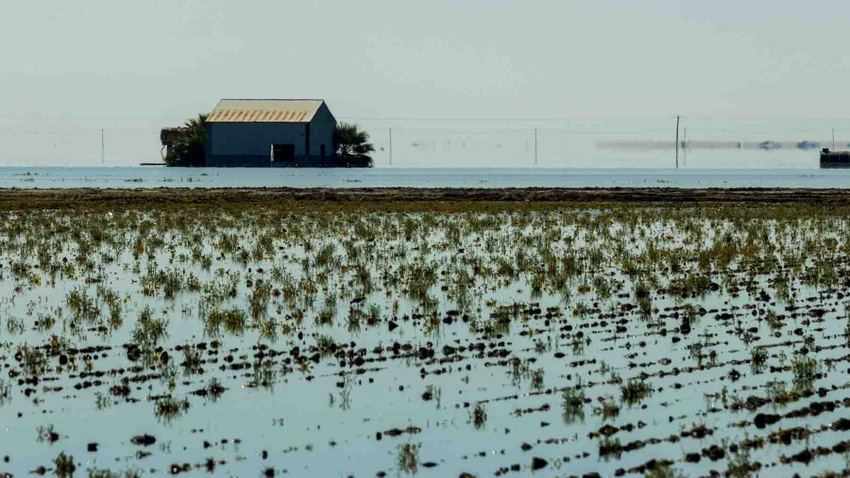
If a million acre feet of water is destined for Tulare Lake, the once-dry lakebed used to grow cotton, canning tomatoes, and other crops, will reassume its role as one of the largest freshwater lakes in the United States.
California’s snowpack is close to 300% of normal in some places as nearly 900 inches of snow has fallen on top of Mammoth Mountain in the Eastern Sierra. And while Tulare Lake will likely fill for the first time in decades, California farmers still are not promised a full allotment of irrigation water.
A day before an emergency meeting of the Kings County Board of Supervisors to address flooding on the Tulare Lake region, USDA Secretary Tom Vilsack sent a letter to California Gov. Gavin Newsom, declaring 54 California counties a “primary natural disaster area due to recent drought.”
Don’t use that word with farmers in the Tulare Lake region right now.
Uncontrolled spills of several reservoirs could happen as early as June if the snowmelt rapidly picks up. Millerton Lake on the San Joaquin River in Fresno County is small in comparison to some of the others and could spill this summer. Pine Flat Reservoir just south of there on the Kings River was at 70% in early April with several times its storage capacity said to be contained in the snowpack upstream.
Lake Don Pedro on the Tuolumne River east of Modesto is likewise being watched by Turlock Irrigation District because upwards of three times its 2 million acre-foot capacity of water remains in the snowpack upstream.
California’s feast-or-famine water issues were addressed in a press call recently that included California Department of Water Resources Director Karla Nemeth. Pressed by reporters, Nemeth said that the state currently has more water than it can handle and is asking those on the State Water Project to store as much of it as possible. San Luis Reservoir, the off-stream storage facility near Los Banos that stores an equal amount of state and federal water, is now full.
The media call highlighted California’s decision to boost the SWP allocation to its contract agencies to 75% of a full allocation. Asked how, if ever, the state could promise to deliver a full allocation to cities and farms, Nemeth could only say there would be another opportunity around June 1 to revisit the allocation decision to boost irrigation allocations to 100%.
Are people starting to see through the cracks in California’s broken water system? If some of the questions by various reporters was any indication, perhaps so. The admission by the state DWR director that California can’t adequately store the water it now has for later use should be a wake-up call to all Californians.
Meanwhile, Nemeth would not speculate on California’s oversupply of water and whether it could forego its take on the Colorado River this season because the state has too much of it right now.
About the Author(s)
You May Also Like






